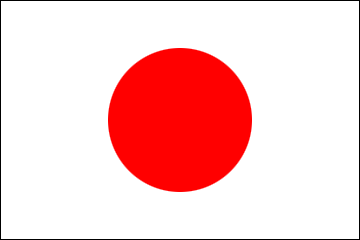TEPCO Fukushima Daiichi Nuclear Power Plant ALPS Treated Water Monitoring Results after Discharge into the Ocean (13 September – 26 September 2023)
2023/10/3
Discharge of the first batch of treated water (7788 m3) was completed on 11 September.
TEPCO announced that the first phase of the second batch of ocean discharges will begin on 3 October and the second phase on 5 October, if weather and sea conditions are favourable, and will take approximately 17 days thereafter.
Sea area monitoring
●TEPCO
On 26, 25, 24, 23, 22, 21, and 20 September, the rapid monitoring results of tritium concentration in seawater collected from 10 locations within 3km of the Fukushima Daiichi nuclear power plant confirmed that tritium concentration was below the lower limit of detection at all monitoring points.
●Ministry of the Environment
On 19, 15, 14, and 13 September, the rapid monitoring results of tritium concentration in seawater collected from 11 points in the waters of Fukushima Prefecture were below the lower limit of detection.
●Fukushima Prefecture
On 19 September, results of rapid measurement of tritium concentration in seawater collected at nine monitoring sites in the waters of Fukushima Prefecture confirmed that tritium concentration was below the lower limit of detection at all monitoring sites.
Aquatic Products monitoring
●the Japanese Government Fisheries Agency
In the morning of 24, 23, 22, 21, and 20 September, the results of monitoring of tritium concentration in halibut etc caught from 4km north of the ALPS treated water discharge point and 5km south of that discharge point confirmed that tritium concentration was below the lower detection limit at all the monitoring points.
Disclosure of monitoring results
The Government of Japan is conducting three types of monitoring (monitoring of treated water in tanks, real-time monitoring, and sea area monitoring) in a multilayered manner with the involvement of the IAEA. The IAEA also conducts sea area monitoring.
These monitoring results can be accessed at any time in the following websites;
https://www.tepco.co.jp/en/decommission/progress/watertreatment/measurementfacility/index-e.html
JAEA (Third Party Monitoring) :
https://fukushima.jaea.go.jp/okuma/alps/index_e.html
https://www.tepco.co.jp/en/decommission/progress/watertreatment/monitoring/index-e.html
Ministry of Environment:
https://shorisui-monitoring.env.go.jp/en/
Fisheries Agency :
https://www.jfa.maff.go.jp/e/inspection/index.html#rapid
https://www.tepco.co.jp/en/decommission/progress/watertreatment/dischargefacility/index-e.html
IAEA :
https://www.iaea.org/topics/response/fukushima-daiichi-nuclear-accident/fukushima-daiichi-alps-treated-water-discharge/tepco-data
TEPCO announced that the first phase of the second batch of ocean discharges will begin on 3 October and the second phase on 5 October, if weather and sea conditions are favourable, and will take approximately 17 days thereafter.
Sea area monitoring
●TEPCO
On 26, 25, 24, 23, 22, 21, and 20 September, the rapid monitoring results of tritium concentration in seawater collected from 10 locations within 3km of the Fukushima Daiichi nuclear power plant confirmed that tritium concentration was below the lower limit of detection at all monitoring points.
●Ministry of the Environment
On 19, 15, 14, and 13 September, the rapid monitoring results of tritium concentration in seawater collected from 11 points in the waters of Fukushima Prefecture were below the lower limit of detection.
●Fukushima Prefecture
On 19 September, results of rapid measurement of tritium concentration in seawater collected at nine monitoring sites in the waters of Fukushima Prefecture confirmed that tritium concentration was below the lower limit of detection at all monitoring sites.
Aquatic Products monitoring
●the Japanese Government Fisheries Agency
In the morning of 24, 23, 22, 21, and 20 September, the results of monitoring of tritium concentration in halibut etc caught from 4km north of the ALPS treated water discharge point and 5km south of that discharge point confirmed that tritium concentration was below the lower detection limit at all the monitoring points.
Disclosure of monitoring results
The Government of Japan is conducting three types of monitoring (monitoring of treated water in tanks, real-time monitoring, and sea area monitoring) in a multilayered manner with the involvement of the IAEA. The IAEA also conducts sea area monitoring.
These monitoring results can be accessed at any time in the following websites;
- Monitoring of treated water in tanks
https://www.tepco.co.jp/en/decommission/progress/watertreatment/measurementfacility/index-e.html
JAEA (Third Party Monitoring) :
https://fukushima.jaea.go.jp/okuma/alps/index_e.html
- Sea area monitoring
https://www.tepco.co.jp/en/decommission/progress/watertreatment/monitoring/index-e.html
Ministry of Environment:
https://shorisui-monitoring.env.go.jp/en/
Fisheries Agency :
https://www.jfa.maff.go.jp/e/inspection/index.html#rapid
- Real-time Monitoring
https://www.tepco.co.jp/en/decommission/progress/watertreatment/dischargefacility/index-e.html
IAEA :
https://www.iaea.org/topics/response/fukushima-daiichi-nuclear-accident/fukushima-daiichi-alps-treated-water-discharge/tepco-data
